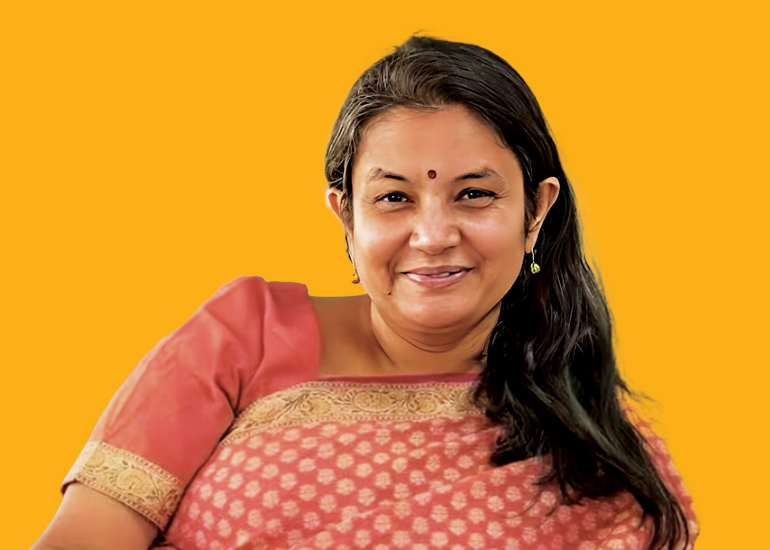Q] How did you develop the creative concept of ‘Heera Ho Tum’ while maintaining the commercial objective of the campaign?
We started the ‘Heera Ho Tum’ (Every Woman is a Diamond) journey a few years back, and noticed a lot of synergy between a woman’s life and that of a diamond’s. Both are understated and elegant. An insight revealed that a lot of women see themselves as their worst critic. From a commercial standpoint, what struck us the most was that a lot of women desire diamonds, but they feel like that they don’t deserve it. We listened to them verbalize that meaningfully, and as a brand we said that we must tell them that their lives are beautiful and celebratory.
Q] How has Tanishq built narratives around jewellery being an extension of a woman’s personality in the face of constantly evolving mediums and consumer inclinations?
When you thrive in a category such as this for the last 25 years, it makes you realise the relationship that you have with women, and in turn reminds you of the responsibility. The relationship needs to renovate, innovate, and move in line with her movement, and she’s moving fast. It should not overstep into private space, and instead give wind beneath her wings, while she is responsible for all that she does. New-age platforms have allowed stories to be told in the longer form. The longer format has now made things conversational, engaging, and receptive to how women perceive communication through comments, shares, and tags. Sometimes we get it right, sometimes we don’t, but it is a learning ground.

Q] What are the media platforms that you focus on, and which medium gets the lion’s share?
We have a balanced media plan because we (which includes our collaborator, Madison) believe that there’s a fair amount of multimedia consumption. We take a balanced approach between Print, Digital, TV, and OOH. The communication is pushed through the lead platforms of every medium in order to maximize reach. We have consciously increased spends on Digital because it’s a measurable, conversational, and community-based platform. It brings us long-term benefits for commerce.
Q] How does Tanishq cater to a PAN-India audience with each state’s own cultural nuances, while keeping the communication personalised for every individual?
Personalisation and regionalisation are at the heart of this business, not just from a promotional perspective, but also from a merchandising perspective. Jewellery is very close to culture. When we did a CRM campaign personalised for every individual, we experienced a 3.5x performance rate. Each individual was addressed by name with jewellery preferences curated in a basket of merchandise. This communication was distributed through WhatsApp, SMS, and e-mail.
Understanding localised challenges in India is also important for personalisation. When we realised a few months ago that the purity of gold is a concern for consumers in Bihar and Jharkhand, we executed a customised campaign addressing concerns such as gold exchanges to purchase jewellery with increased purity, assurance on the quality, and more. Additionally, we do campaigns for various states where there’s an opportunity to celebrate culture through a piece of collection. We promote the collection as a tribute to the ethos of that culture, while ensuring that the woman, who is a beautiful blend of modernity and tradition, is celebrated. Personalisation trickles down at all levels – conceptualisation, operation, and execution. Jewellery as a category cannot be sold uniformly to 1.2bn people.
Q] The journey starts with content and storytelling but the destination is commerce. There might be a consumer who sees a social media post by Tanishq and then steps into the store to purchase it. So, how do you trace this purchase journey of the Digital hybrids?
The top-of-the-funnel metrics and the bottom of the bottom-of-the-funnel metrics are attributable and there is a certain linkage, but we are learning how we can have more specific mid-funnel metrics. 96% of any purchase starts with discovery – people go online, find something on our social handles, and visit our website, which gets a little more than 200000 people every day. They get to see all our 425 stores in some ways.
We try to keep our top of the funnel healthy and make sure that the mid-funnel is managed through an omnichannel strategy, whether it includes re-marketing, following through on our online leads, re-targeting certain segments, or maintaining a robust CRM, which makes sure that we are able to build a relationship with our customers and notify them of our launches. Our digi-local campaigns address localised challenges or opportunities that we might have in a certain store. There are several metrics that go into that – view-through or click-through rates, the conversion rates, and then we try to trace it back to the person who was targeted and find out who bought what.
Q] How do you build brand loyalty in the increasingly competitive market and improve consideration for an expensive purchase?
We’re a high-involvement lifestyle brand, and believe that there is a fair amount of trust, emotion, and long-term relationship-building that plays out in jewellery as a category. So, it’s not that you can advertise today and expect sales tomorrow. If we have a bride who’s getting married in February, she’s probably in the market by August. In our category, relationships are built over time, and therefore, funnel management is important. But there are long-term measures of how to move consideration and preference scores, which happens through a lot of content marketing.
























